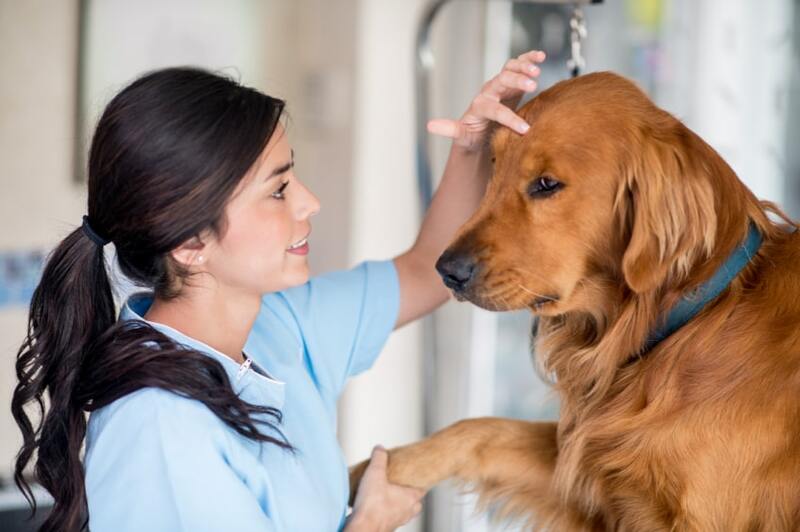Beyond Nurses: 6 Professions That Use Scrubs
When thinking of scrubs, hospital staff always comes to mind first. But, who else wears scrubs? You may be surprised that these 6 professions also require medical uniforms.
Scrubs have been the standard for nurses for just a few decades, as practices regarding sanitation and patient welfare greatly improved. The practice of providing and utilizing protective clothing only truly caught on in the wake of the Spanish influenza pandemic, which led to the death of millions in 1918.
This led to doctors and surgeons making use of aprons and gauze masks, to protect their own health. It took several decades for modern Western medical practices to begin enforcing aseptic technique, strictly decontaminating before surgery. With an emphasis on cleanliness, hospitals and their workers adopted the color white.
The History of Medical Scrubs
Both nurses (who had already been wearing uniforms at the time) and doctors worked with white color, until green became the new standard in the 1970s (presumably to aid doctors with the eye-searing work of staring at white and red surfaces bleached by powerful white lights for hours at a time).
This is around the same time that scrubs became the standard for both doctors and nurses. But in the decades that followed, this practice spread throughout a variety of different healthcare professions, as well as other professional settings. Aside from doctors and nurses, here are a number of different professions that also make use of scrubs, usually in a variety of colors.
1. Physical Therapists
Physical therapists help patients:
- Recover from surgeries or injuries
- Develop programs to reduce joint pain or back pain
- Utilize a variety of training methods and exercises to help patients relieve pain, improve their strength and mobility, and regain any lost balance and/or coordination
Since being a PT is an incredibly active line of work, scrubs lend themselves perfectly to the task by being flexible and breathable, allowing physical therapists to stay on their feet and work with their patients in a hands-on manner.
Physical therapists often work alongside physicians to help guide a patient’s treatment. Physical therapy assistants are often also tasked with wearing scrubs, and they specialize in helping a physical therapist perform their duties effectively.
2. Radiologists
Radiologists are medical doctors who operate and make use of diagnostic imaging tools, running tests and examinations through the use of a variety of different machines. They work with other doctors to treat injuries and identify treatment options through:
- X-rays
- Computed tomography (CT) scans
- Magnetic resonance imaging (MRI)
- Positron emission tomography (PET) scans, and more
Radiologists also treat certain diseases through radiation (nuclear medicine) and minimally invasive procedures.
While their job might not involve as much physical interaction with a patient as some other branches of medicine, radiologists still regularly work with patients to help guide them through the imaging process, help them remain calm while getting tested, and applying certain treatments.
3. Forensic Nurses
Forensic nurses are professionals who are specifically tasked with gathering evidence for law enforcement, in order to apprehend individuals who have committed acts of violence and abuse.
They are often tasked with treating patients who have suffered trauma at the hands of a violent perpetrator, ranging from sexual assault victims to victims of neglect, domestic violence, and assault. While treating their patients, the evidence they collect becomes crucial in the prosecution of those who committed such acts of violence. Forensic nurses receive special training and provide specialized care.
4. Veterinarians
A more obvious profession where scrubs are necessary is veterinary medicine, due to the fact that, just like human doctors working with human patients, human doctors working with animal patients need a uniform that is versatile, breathable, unobtrusive, easily washable, and makes the job easier.
There’s very little evidence to suggest that the color of our scrubs have an actual impact on the animals we treat, with one study in particular pointing towards lizards and birds as being potentially picky regarding certain colors, at least at a distance. It showed that if you approached a species of bird or lizard with a color similar to it, it would be less likely to flee (until it becomes obvious that you are, in fact, a human).
While that doesn’t have much bearing on whether or not your dog might prefer a vet with green scrubs or red scrubs (your dog would see neither color), it goes to show that there’s a lot about animals we do not fully know yet, and veterinarians provide a critical role in caring for them.
5. Dietitians
Dietitians are different from nutritionists and are sometimes also referred to as dietitian nutritionists. To become a registered dietitian, a person has to obtain a graduate degree, complete an accreditation program, and/or attend an internship that mandates at least 1,200 hours of supervised practice hours.
Some dietitians are medical doctors as well. Registered dietitians are healthcare professionals, whereas nutritionists are unregulated, and can be certified through several different organizations. Dietitians often work in fields that tackle public health, as well as research roles. Nevertheless, they often wear scrubs to denote their profession as a healthcare provider.
6. Pharmacy Technicians
Not to be confused with pharmacists, pharmacy technicians are often a pharmacist’s assistant, providing help in dispensing medication. Other related tasks include answering patient questions, providing further drug information, or relaying information from the patient to the pharmacist.
While pharmacy technicians are not required to wear scrubs, they sometimes do. Pharmacy technicians are typically seen wearing white scrubs or lab coats.
Common Questions About Scrubs
How Did Professionals Begin Wearing Scrubs?
The history of scrubs began in 1918 during the outbreak of the Spanish influenza pandemic as medical professionals needed to protective clothing.
What Other Professions Wear Scrubs to Work?
There are many industries and professions that utilize scrubs. These include: physical therapists, radiologists, veterinarians, and many more.
Why Do So Many Industries Use Them?
These are the uniform of choice for many because they are comfortable, easy to wear, fit on all bodies, come in a variety of cuts and colors, and provide the flexibility and uniformity required for many types of work.
In Conclusion
Scrubs are more than just the uniform of choice for physicians, surgeons, and nurses. They’re comfortable, easy to wear, fit on all bodies, come in a variety of cuts and colors, and provide the flexibility and uniformity needed in many different lines of work.
They allow medical professionals in all sorts of different settings to identify spills and stains, avoid ruining personal clothing, and help identify one another and separate a professional from a patient. They’re easy to launder and clean, and much easier to replace than most personal clothing.
Regardless of who your patient is and whether your job consists mostly of hands-on treatment or desk work, a pair of scrubs is hard to beat when it comes to both aesthetics and functionality.



